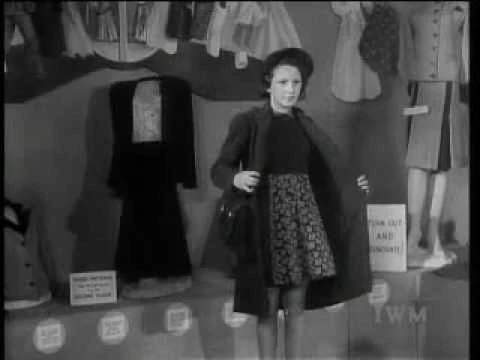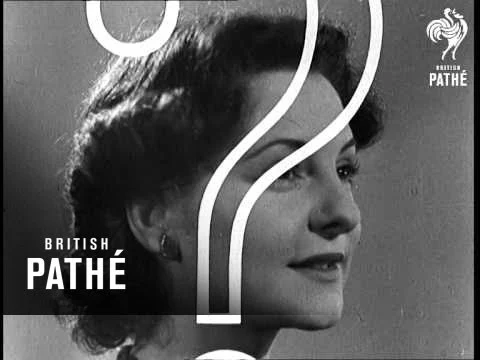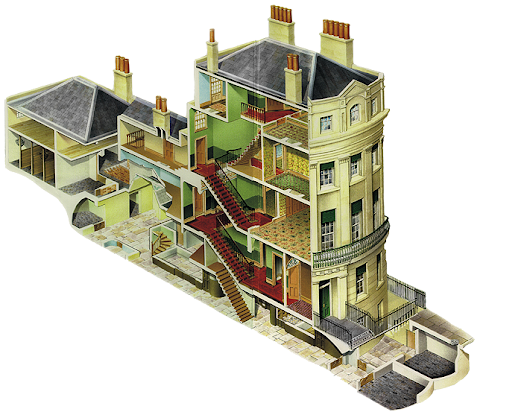Thursday, April 11, 2019
Railways - WW1
Rationing
Living On Rations In WW2 | I Was There > .
>> Homefront WW2 >>>
World war II: The resource war - Extra History playlist >> .
War Rationing - UK >> .
War Rationing - UK - RodG >> .
WW2 Rations 1940: weekly, per one person (adult)
Butter: 50g (2oz)
Bacon or ham: 100g (4oz)
Margarine: 100g (4oz)
Cooking fat/lard: 100g (4oz)
Sugar: 225g (8oz).
Meat: To the value of 1/2d and sometimes 1/10d – about 1lb (450g) to 12ozs (350g)
Milk: 3 pints (1800ml) occasionally dropping to 2 pints (1200ml).
Cheese: 2oz (50g) rising to 8oz (225g)
Eggs: 1 fresh egg a week.
Tea: 50g (2oz).
Jam: 450g (1lb) every two months.
Dried eggs: 1 packet (12 eggs) every four weeks.
Sweets & Chocolate: 350g (12oz) every four weeks
http://www.lavenderandlovage.com/2012/11/the-wartime-kitchen-living-of-rations-with-ration-book-cooking-day-one.html .
Although food in Britain was rationed, it was in fact in plentiful supply. Whilst luxury items may have been more difficult to find, there was always sufficient bulk foods such as bread, potatoes and vegetables to make sure that the people did not go hungry. Britain did discriminate in favour of the armed service and industrial workers in terms of food supply, but this only accounted for 20 per cent of the population, and despite this there was still enough food supply for the remainder. This was coupled with the growth in dairy farming, and also the desire of the government to encourage individuals to open their own allotments and grow their own vegetables. As a result of German attacks against ships bringing foods to Britain, food imports of necessity fell, but home production increased, typified by the ‘dig for victory’ campaign.
Food waste was identified as a problem in the UK as early as World War I.
During World War II, rationing was imposed almost immediately. Restrictions were immediately more stringent than in the Great War as with effect from 8 January 1940 ration books were issued and most foods were subject to ration. By August 1940, legislation was passed that made the wasting of food a prisonable offence. Posters encouraged kitchen waste to be used for feeding animals, primarily swine but also poultry.
Many of the methods suggested by current campaigns to prevent food waste have taken inspiration from those of World War II. Despite this, it remains debatable whether the waste campaigns and rationing, during and post WWII, achieved any long-term change in people's attitudes towards waste.
.....
Combating food waste was one of the initial goals of the Women's Institutes (WI), set up in 1915, and remains a subject of their campaigns. Rationing was adopted during World War I, although it was voluntary, from February 1917; it was only between December 1917 and February 1918 that rationing began, in stages, to be made compulsory. As well, there is no evidence to suggest that by 1918 fines were imposed on either individuals or businesses for wasting food. Meanwhile, in the USA (where shortages were hardly comparable), legislators considered laws restricting the distribution of food in order to cut waste, breaches of which might be punishable by fines or imprisonment.
https://en.wikipedia.org/wiki/Food_waste_in_the_United_Kingdom#History
Reducing Waste in Garden - ChDo > .

Make Do & Mend
https://www.youtube.com/watch?v=f4RpJcVs1VI
War Rationing
https://www.youtube.com/playlist?list=PLUtmYhM_ZYPFRilIN01BGDDiXqLCG9M4Q

2 Cooks & 1 Cabbage
https://www.youtube.com/watch?v=2evv45stEHw
Ministry of Food Info
https://www.youtube.com/playlist?list=PLD3FFF82AEF2400AC
Tea-making tips (1941)
https://www.youtube.com/watch?v=vnvYymrCn4g
DIG FOR VICTORY
WW2 Food
https://www.youtube.com/watch?v=uuYyasab1Qg
Homefront
https://www.youtube.com/watch?v=sBGdSNi6Flc
Wartime Recipes 1
https://www.youtube.com/watch?v=yRCtNXIBBpU
SUPERSIZERS WWII PLAYLIST
https://www.youtube.com/watch?v=gOE0VP0EZ0M&list=PLc8fLbug07X31kIQm3XfBfEd-Fqms2irB
Dining Room
https://www.youtube.com/watch?v=ltDxY_7TMQw
Kitchen
https://www.youtube.com/watch?v=HPVvta-tHC8
Food Rationing & Nutrition - US
https://www.youtube.com/watch?v=RRQH59_xdgs
Ration Coupons - US
https://www.youtube.com/watch?v=60qOtTaz6VQ
Original Victory Garden - US
https://www.youtube.com/watch?v=31hB5d__UT4
Victory gardens ww1 ww2 - US
https://www.youtube.com/watch?v=XkPVInuJZII
World war II: The resource war - Extra History playlist >> .
War Rationing - UK >> .
War Rationing - UK - RodG >> .
WW2 Rations 1940: weekly, per one person (adult)
Butter: 50g (2oz)
Bacon or ham: 100g (4oz)
Margarine: 100g (4oz)
Cooking fat/lard: 100g (4oz)
Sugar: 225g (8oz).
Meat: To the value of 1/2d and sometimes 1/10d – about 1lb (450g) to 12ozs (350g)
Milk: 3 pints (1800ml) occasionally dropping to 2 pints (1200ml).
Cheese: 2oz (50g) rising to 8oz (225g)
Eggs: 1 fresh egg a week.
Tea: 50g (2oz).
Jam: 450g (1lb) every two months.
Dried eggs: 1 packet (12 eggs) every four weeks.
Sweets & Chocolate: 350g (12oz) every four weeks
http://www.lavenderandlovage.com/2012/11/the-wartime-kitchen-living-of-rations-with-ration-book-cooking-day-one.html .
https://www.cooksinfo.com/british-wartime-food/ .
https://en.wikipedia.org/wiki/Rationing_in_the_United_Kingdom .
https://en.wikipedia.org/wiki/Rationing_in_the_United_Kingdom .
Food waste was identified as a problem in the UK as early as World War I.
During World War II, rationing was imposed almost immediately. Restrictions were immediately more stringent than in the Great War as with effect from 8 January 1940 ration books were issued and most foods were subject to ration. By August 1940, legislation was passed that made the wasting of food a prisonable offence. Posters encouraged kitchen waste to be used for feeding animals, primarily swine but also poultry.
Many of the methods suggested by current campaigns to prevent food waste have taken inspiration from those of World War II. Despite this, it remains debatable whether the waste campaigns and rationing, during and post WWII, achieved any long-term change in people's attitudes towards waste.
.....
Combating food waste was one of the initial goals of the Women's Institutes (WI), set up in 1915, and remains a subject of their campaigns. Rationing was adopted during World War I, although it was voluntary, from February 1917; it was only between December 1917 and February 1918 that rationing began, in stages, to be made compulsory. As well, there is no evidence to suggest that by 1918 fines were imposed on either individuals or businesses for wasting food. Meanwhile, in the USA (where shortages were hardly comparable), legislators considered laws restricting the distribution of food in order to cut waste, breaches of which might be punishable by fines or imprisonment.
https://en.wikipedia.org/wiki/Food_waste_in_the_United_Kingdom#History
https://www.youtube.com/watch?v=Vc-SOrhSDJE
Wartime Cooking - potato chips > .
Wartime Cooking - Elice >> .
Compost, chickens, soil, vermiculture - tb >> .
Motoring back on Ration > .
Resource War - tb >> .
Wartime Kitchen, Garden - Elice >> .
1940s House - Elice >> .
Fashion, rationing 30s, 40s - Elice >> .
Victorian Garden, Pharmacy, House - Elice >> .
Harvest - Elice >> .
Edible, Medicinal, Useful Plants - Elice >> .
Clothes rationing & flour sacks
https://youtu.be/LyGdRw6vK8Q?t=43m6s
continue, beauty products: https://youtu.be/LyGdRw6vK8Q?t=48m22s
Resource War ..
Wartime food & rationing
The Ministry of Food: Food Rationing in World War Two
http://www.culture24.org.uk/history-and-heritage/military-history/world-war-two/art76114
wartime videos on cooking and frugal living
https://www.youtube.com/watch?v=__XXJ_FHPww&list=PLnk8vXVlDJUiP0WygyIh6BMf-w5vYvm2M
playlist
https://www.youtube.com/playlist?list=PLolzHiCNNbO-8Aw3KJ8x20ycSXIu_pZZA
A Family in Wartime: Rationing
https://www.youtube.com/watch?v=jDfID-vGxkE
WW2 Food
https://www.youtube.com/watch?v=uuYyasab1Qg
Make Do & Mend
https://www.youtube.com/watch?v=f4RpJcVs1VI
2 Cooks & 1 Cabbage
https://www.youtube.com/watch?v=2evv45stEHw
Ministry of Food Info
https://www.youtube.com/playlist?list=PLD3FFF82AEF2400AC
Tea-making tips (1941)
https://www.youtube.com/watch?v=vnvYymrCn4g
DIG FOR VICTORY
WW2 Food
https://www.youtube.com/watch?v=uuYyasab1Qg
Homefront
https://www.youtube.com/watch?v=sBGdSNi6Flc
Wartime Recipes 1
https://www.youtube.com/watch?v=yRCtNXIBBpU
SUPERSIZERS WWII PLAYLIST
https://www.youtube.com/watch?v=gOE0VP0EZ0M&list=PLc8fLbug07X31kIQm3XfBfEd-Fqms2irB
Dining Room
https://www.youtube.com/watch?v=ltDxY_7TMQw
Kitchen
https://www.youtube.com/watch?v=HPVvta-tHC8
Food Rationing & Nutrition - US
https://www.youtube.com/watch?v=RRQH59_xdgs
Ration Coupons - US
https://www.youtube.com/watch?v=60qOtTaz6VQ
Original Victory Garden - US
https://www.youtube.com/watch?v=31hB5d__UT4
Victory gardens ww1 ww2 - US
https://www.youtube.com/watch?v=XkPVInuJZII
Post-war meat rationing
https://www.youtube.com/watch?v=b6U1XWvdBXU
1948 - The Horsemeat Scandal
https://www.youtube.com/watch?v=7gaZdHLB5tY
Wartime Cooking - Elice >> .
Compost, chickens, soil, vermiculture - tb >> .
Motoring back on Ration > .
Resource War - tb >> .
Wartime Kitchen, Garden - Elice >> .
1940s House - Elice >> .
Fashion, rationing 30s, 40s - Elice >> .
Victorian Garden, Pharmacy, House - Elice >> .
Harvest - Elice >> .
Edible, Medicinal, Useful Plants - Elice >> .
Clothes rationing & flour sacks
https://youtu.be/LyGdRw6vK8Q?t=43m6s
continue, beauty products: https://youtu.be/LyGdRw6vK8Q?t=48m22s
Resource War ..
Wartime food & rationing
The Ministry of Food: Food Rationing in World War Two
http://www.culture24.org.uk/history-and-heritage/military-history/world-war-two/art76114
wartime videos on cooking and frugal living
https://www.youtube.com/watch?v=__XXJ_FHPww&list=PLnk8vXVlDJUiP0WygyIh6BMf-w5vYvm2M
playlist
https://www.youtube.com/playlist?list=PLolzHiCNNbO-8Aw3KJ8x20ycSXIu_pZZA
A Family in Wartime: Rationing
https://www.youtube.com/watch?v=jDfID-vGxkE
WW2 Food
https://www.youtube.com/watch?v=uuYyasab1Qg
Make Do & Mend
https://www.youtube.com/watch?v=f4RpJcVs1VI
2 Cooks & 1 Cabbage
https://www.youtube.com/watch?v=2evv45stEHw
Ministry of Food Info
https://www.youtube.com/playlist?list=PLD3FFF82AEF2400AC
Tea-making tips (1941)
https://www.youtube.com/watch?v=vnvYymrCn4g
DIG FOR VICTORY
WW2 Food
https://www.youtube.com/watch?v=uuYyasab1Qg
Homefront
https://www.youtube.com/watch?v=sBGdSNi6Flc
Wartime Recipes 1
https://www.youtube.com/watch?v=yRCtNXIBBpU
SUPERSIZERS WWII PLAYLIST
https://www.youtube.com/watch?v=gOE0VP0EZ0M&list=PLc8fLbug07X31kIQm3XfBfEd-Fqms2irB
Dining Room
https://www.youtube.com/watch?v=ltDxY_7TMQw
Kitchen
https://www.youtube.com/watch?v=HPVvta-tHC8
Food Rationing & Nutrition - US
https://www.youtube.com/watch?v=RRQH59_xdgs
Ration Coupons - US
https://www.youtube.com/watch?v=60qOtTaz6VQ
Original Victory Garden - US
https://www.youtube.com/watch?v=31hB5d__UT4
Victory gardens ww1 ww2 - US
https://www.youtube.com/watch?v=XkPVInuJZII
Post-war meat rationing
https://www.youtube.com/watch?v=b6U1XWvdBXU
1948 - The Horsemeat Scandal
https://www.youtube.com/watch?v=7gaZdHLB5tY

Meat Cut Ties Up Butchers (1951)
Make Do & Mend
https://www.youtube.com/watch?v=f4RpJcVs1VI
War Rationing
https://www.youtube.com/playlist?list=PLUtmYhM_ZYPFRilIN01BGDDiXqLCG9M4Q

Make Do And Mend
2 Cooks & 1 Cabbage
https://www.youtube.com/watch?v=2evv45stEHw
Ministry of Food Info
https://www.youtube.com/playlist?list=PLD3FFF82AEF2400AC
Tea-making tips (1941)
https://www.youtube.com/watch?v=vnvYymrCn4g
DIG FOR VICTORY
WW2 Food
https://www.youtube.com/watch?v=uuYyasab1Qg
Homefront
https://www.youtube.com/watch?v=sBGdSNi6Flc
Wartime Recipes 1
https://www.youtube.com/watch?v=yRCtNXIBBpU
SUPERSIZERS WWII PLAYLIST
https://www.youtube.com/watch?v=gOE0VP0EZ0M&list=PLc8fLbug07X31kIQm3XfBfEd-Fqms2irB
Dining Room
https://www.youtube.com/watch?v=ltDxY_7TMQw
Kitchen
https://www.youtube.com/watch?v=HPVvta-tHC8
Food Rationing & Nutrition - US
https://www.youtube.com/watch?v=RRQH59_xdgs
Ration Coupons - US
https://www.youtube.com/watch?v=60qOtTaz6VQ
Original Victory Garden - US
https://www.youtube.com/watch?v=31hB5d__UT4
Victory gardens ww1 ww2 - US
https://www.youtube.com/watch?v=XkPVInuJZII
Recruiting women
Recruiting women
https://www.youtube.com/watch?v=xej9VdybF40
Wrens - Royal Naval College Issue Title - How Time Flies! (1940)
https://www.youtube.com/watch?v=jQtPKzAQWEM
W.R.N.S. At The Helm (1944)
https://www.youtube.com/watch?v=cyGWgHuI0C0
https://www.youtube.com/watch?v=xej9VdybF40
Wrens - Royal Naval College Issue Title - How Time Flies! (1940)
https://www.youtube.com/watch?v=jQtPKzAQWEM
W.R.N.S. At The Helm (1944)
https://www.youtube.com/watch?v=cyGWgHuI0C0
Refugee Children Movement - 38-12-2
The term "kindertransport" is also sometimes used for the rescue of mainly Jewish children, but without their parents, from Germany, Austria and Czechoslovakia to the Netherlands, Belgium, and France. An example is the 1,000 Chateau de La Hille children who went to Belgium. However, often, the "kindertransport" is used to refer to the organised programme to the United Kingdom.
World Jewish Relief (then called the Central British Fund for German Jewry) was established in 1933 to support in whatever way possible the needs of Jews both in Germany and Austria. Records for many of the children who arrived in the UK through the Kindertransports are maintained by World Jewish Relief.
The British Kindertransport programme was unique – no other country had a similar programme. In the United States, the Wagner–Rogers Bill was introduced in Congress, but due to much [xenophobic] opposition, it never left committee.
Regency Town House
The Regency Town House was built on what had already become the traditional layout for town houses. The domestic offices for the servants were in the basement, the formal rooms were on the ground and first floors and the bedrooms on the floors above. Due to higher land prices in towns, even large houses tended to be built upwards on long, narrow plots. At the back of the house there was a coach house, stable block and quarters for the coachmen and grooms.
Subscribe to:
Comments (Atom)
sī vīs pācem, parā bellum
igitur quī dēsīderat pācem praeparet bellum therefore, he who desires peace, let him prepare for war sī vīs pācem, parā bellum if you wan...

-
>>> Economic > >>> Geopolitics > >>> Military > >>> Resources > > >> Sociopoli...
-
2025 Fiasco; Christo-Fascist Project 2025 2025 Blueprint for Theocracy - αλλο >> . 2025 Christo-Fascist Blueprint for Autocracy - Shr...
-
> > Alliances > > > > Authoritarianism > > > Axis of Envious Resentment 2025 > > > > Civil...


